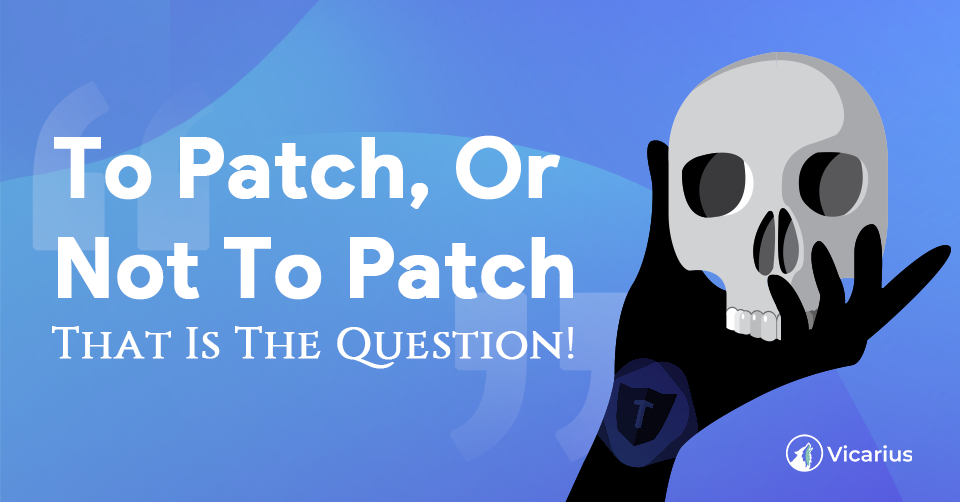So you’re at that warm, fuzzy place CISOs and IT professionals know all-too-well: There are countless vulnerabilities your organization is “theoretically” vulnerable to, for which you’d like to start implementing patches immediately to increase security, but on the other hand, you’re concerned about patches and new version releases breaking users’ functionality.

Scenario 1: Let’s assume the organization’s HR department is using staffing software that is not running at its most recent version. Why? Because you tried to upgrade it in the past, but that screwed up the printer interface or made the software stop talking to the organization’s time clock.
Scenario 2: Accounting department’s invoicing software has a new CVE but it’s payroll week and the Controller says that if you patch, he will not likely make payroll on time.
So...do you patch, or not patch?
Why To Patch
- Your software becomes more secure
- Security patches often update the software to its latest version, allowing you to take advantage of the latest updates
- Eliminates most known CVEs and vulnerabilities
Why Not To Patch
- The risk of breaking something that works
- Patching requires some downtime and might result in staff needing to adjust to new versions or workflows
- Resource-intensive work which might require an update rollback, config changes and patch confirmations
Once you’ve decided to pull the trigger and patch, it seems as if the process is far from over...
Did last week's patching cycle go smoothly?
Need to run multiple VA scans to confirm?
It’s pretty much off to the races with confirming new software versioning, making sure nothing is broken, providing helpdesk support to existing users in case software has changed, and more…
What if you need to rollback a certain patch across hundreds or thousands of endpoints?At the end of the day, it’s like chasing your own tail.
As a CISO or cybersecurity professional, you’re expected to let everyone have their cake and eat it too -- Management and operations teams are expecting you to allow their digital landscape and business software to be used uninterruptedly and without compromising user comfort and global access. However, you’re aware that if a serious breach takes place due to faulty security practices or vulnerable software, the blame will fall solely on you. It's up to you to keep a strong cyber posture and hygiene.
What if there was a solution out there to let you do it all -- Keep the organization’s network fully secured while complying with priorities for an uninterrupted software continuity? Vicarius’ Topia two-step approach to software patches include:
- Patch Management: When you decide it’s time to patch, Topia will allow you to vertically roll a patch or security update across the entire organization, or across specific groups, in one click of a button (and receive confirmation almost instantaneously). Did something break in the process? Rollback patch updates within minutes and have users return to their desks while you figure out what went wrong.
- Patchless Protection: What if patching isn’t an option? Vicarius’ proprietary, ML-powered algorithm will inspect binary files in real-time and will notify you of suspicious activity which might indicate a breach or hack. This puts control back in your hands even if official CVEs or patches have yet to be released!



